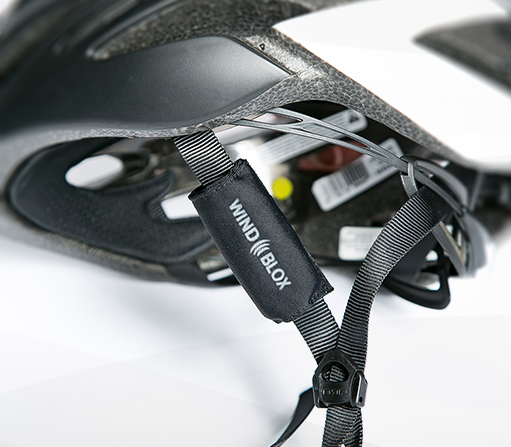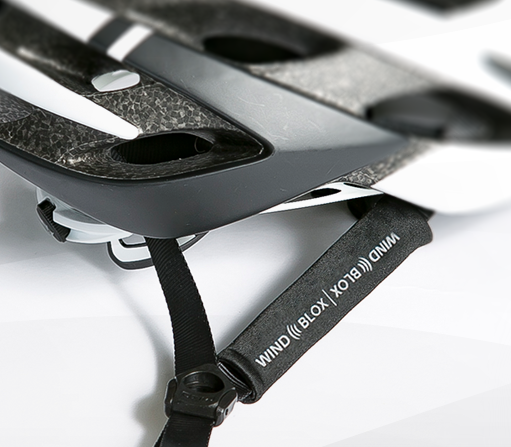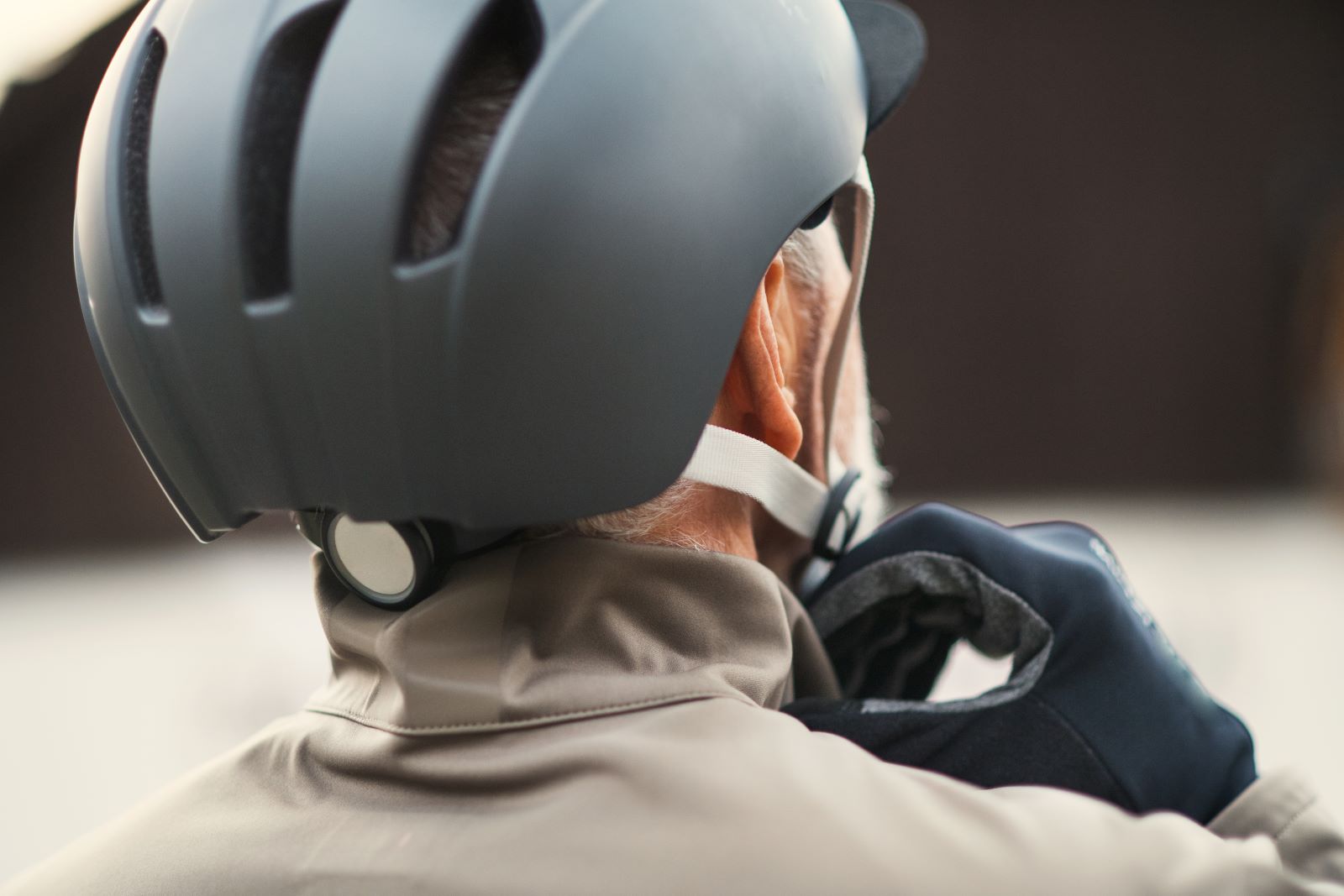It’s tough to find the right mix of noise and quiet on a bike, especially for commuters. Some turn to headphones to drown out monotonous road noise, while others keep their ears clear to ensure they are aware of traffic and potential road hazards.
Whether you’re a commuter, dedicated roadie or mountain bike trail bomber, wind noise is something you’re going to encounter. It’s an irritating thread that spans every corner of the sport, and only gets worse as riders get better, and faster.

That’s why Wind-Blox builds its line of noise-cancelling helmet strap covers. They fit like sleeves over your helmet straps, acting as a buffer between your ears and the elements. The point is to create a dead zone in the air around your ears. The result? Over 80% reduced wind noise, according to the company.
Wind-Blox Building Blocks
Wind-Blox look and function like microphone covers, fitting snugly on helmet straps just in front of the ears. The pads deflect wind without blocking out the ambient noise riders need to hear, providing a quiet ride in the process.

Engineer Mike Fajen created Wind-Blox in 2010 after becoming concerned with his hearing during his 13-mile bicycle commute into Portland, Oregon.
The product is similar to Cat-Ears AirStreamz, which are furry strap covers that work the same way. Wind-Blox look lower-profile, with sports fabric on the exterior, rather than the fuzz of AirStreamz. They also feature reflective fabric for added safety, and are machine washable.
Wind-Blox Helmet Strap Covers: Safety and Hearing
Even at leisurely speeds, gusting winds can completely block out noise coming from the road, your own bike or other riders. The effect creates a frustrating nuisance at best, and a serious safety concern at worst.
Aside from immediate safety concerns, cyclists could face serious medical issues resulting from prolonged and repeated exposure to wind. Wind noise is so common and constant, many riders don’t think about it — even though it can be deafening.
 According to the U.S. Department of Health and Human Services, wind noise can reach up to 85 decibels at 15 mph, and up to 120 decibels at 60 mph.
According to the U.S. Department of Health and Human Services, wind noise can reach up to 85 decibels at 15 mph, and up to 120 decibels at 60 mph.
Purdue University equates 85 decibels to the sound of a blender or milling machine. Noise reaching 100 decibels is about the equivalent of a motorcycle, jackhammer or garbage truck. Noise on an aircraft carrier deck hits around 140 decibels.
According to the USDHHS, repeated exposure to noise at or above 85 decibels can cause hearing loss. The louder the noise, the quicker hearing loss can happen.
Wind-Blox are available in several editions including Classic, Pro, Pro XL and Focus, ranging in price from about MSRP $18 to $24. Learn more at the brand’s website.
